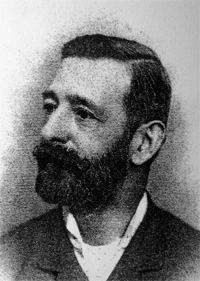Name George Hine Role Architect | Died 1916 Structures Hellingly Hospital | |
 | ||
George Thomas Hine (1842–1916) was an English architect. His prolific output included new county asylums for Hertfordshire, Lincolnshire, Hampshire, Surrey, East Sussex and Worcestershire, as well as extensive additions to many others.
Contents
Biography
Son of Thomas Chambers Hine of Nottingham, with whom he was in partnership up to 1891, Hine specialized in asylum architecture, and his paper to the RIBA in 1901 still provides a valuable review of asylum design and planning. In 1887, after winning the competition for the enormous new LCC (London County Council) asylum at Claybury, Essex, he established his practise in London. This was strengthened by his experience as Consulting Architect to the Commissioners in Lunacy, a post which he held from 1897, succeeding Charles Henry Howell. He was a frequent entrant for asylum competitions, winning his first, for Nottingham Asylum, in 1875. During the 1880s and 1890s he entered ten asylum competitions – winning five – and was assessor for four others. He designed and saw completed four major LCC asylums housing over 2,000 patients each (Claybury, Bexley, Horton and Long Grove), and his prolific output included new county asylums for Hertfordshire, Lincolnshire, Hampshire, Surrey, East Sussex and Worcestershire, as well as extensive additions to many others. His concentration on this one building type reflected his own perception of asylum architecture as an "almost distinct profession in itself".
Architectural style
Hine's asylum designs had several distinguishing features that can be used to identify any of his many projects. All were built in red brick and had grey stonework. His later designs often feature a polychrome white/red brick pattern, especially for window mullions, although this was a relatively common architectural detail at the time and not exclusive to Hine. Hine was an early exponent of the 'echelon' design of asylums. His hospitals tend to lack unnecessary embellishments inside and out, especially when compared to other British asylum designs such the Royal Holloway Sanatorium or High Royds Hospital. An interior design feature used in many of Hine's asylums, although not unique to his designs, was the fitting of brown glazed tiles up the lower half of corridors, stairwells and other non-residential rooms.
